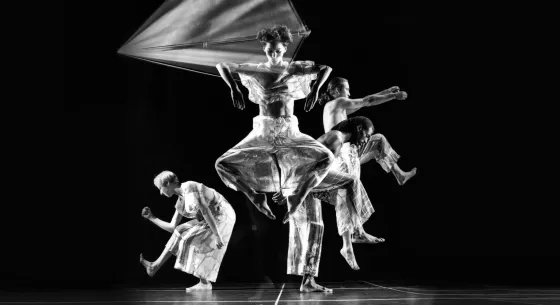
We're so glad you're here! Please select the tab links below to enjoy all of the program content.
Top image: Travelogue (1979) Choreography: Merce Cunningham. Performers: Savannah Gaillard, Spencer Weidie, Catherine Kirk, Burr Johnson, Patrick Needham, Jennifer Payán, Claude CJ Johnson. Photo by Ben McKeown, courtesy of the American Dance Festival.
The Program
Dancing With Bob: Rauschenberg, Brown & Cunningham Onstage
Presented by Northrop and the Walker Art Center
Duration: Approximately 85 minutes, including one 20-minute intermission.
Trisha Brown Dance Company (TBDC) and Merce Cunningham Trust (MCT) celebrate the centennial of the visionary American artist Robert Rauschenberg. While widely recognized for his groundbreaking contributions to visual art, Rauschenberg also played a significant role in the performing arts, both as a performer and as a designer for choreographers over several decades. Among the many dance artists he collaborated with, his most frequent and notable partnerships were with Merce Cunningham and Trisha Brown.
For this occasion, TBDC will unite the work of these iconic 20th century artists in an evening of dance featuring “visual presentations” designed by Rauschenberg. The program will include Brown’s beloved Set and Reset, set to music by Laurie Anderson, alongside Cunningham’s Travelogue, a vaudevillian pièce de résistance—featuring music by John Cage—that hasn’t been staged by a professional company since 1979.
This will be TBDC’s sixth presentation by Northrop, with the most recent performance taking place at the Walker in Mar 2014, while the last at Northrop was in 2008. Additionally, TBDC performed at Northrop in 2002, 1998, and 1991. Merce Cunningham Dance Company was presented by Northrop seven times before the company’s final performance in 2011, last at the Quarry Park and Nature Preserve in Sep 2008. All Brown and Cunningham engagements were co-presentations with the Walker.
“I always tell people that dance is the most fragile art form because it’s dependent on everything about you … You know, everything shows—your body in a specific time and place, whatever it’s thinking, whatever it’s feeling. It’s all right there. I’m definitely envious.”—Robert Rauschenberg
Set and Reset (1983)
Duration: 22 minutes
Choreography: Trisha Brown
Music: Laurie Anderson, Long Time No See
Original Design and Costumes: Robert Rauschenberg
Lighting Design: Beverly Emmons
Choreography Staging: Carolyn Lucas with Cecily Campbell, Marc Crousillat, Jamie Scott
Design & Production Reconstruction Consultant: Jessie Ksanznak, Nick Kolin
Scenic Reconstruction: Lawrence Voytek, ShowFab
Costume Reconstruction: Amanda Kmett’Pendry, Dyenamix Inc., Zarah Green
Dancers: Savannah Gaillard, Rochelle Jamila, Burr Johnson, Ashley Merker, Patrick Needham, Jennifer Payán, Spencer Weidie
Set and Reset was first performed by the Trisha Brown Dance Company on Oct 20, 1983 as part of the Next Wave Festival at the Brooklyn Academy of Music. Original Cast: Trisha Brown, Iréne Hultman, Eva Karczag, Diane Madden, Stephen Petronio, Vicky Shick, Randy Warshaw.
Intermission—20 Minutes
Travelogue (1977)
Duration: 33 minutes
Choreography: Merce Cunningham
Music: John Cage, Telephones and Birds
Original Design and Costumes: Robert Rauschenberg
Choreography Staging: Marcie Munnerlyn and Andrea Weber
Music Director & Realization of Telephones and Birds for Mobile Devices: Adam Tendler
Design & Production Consultant: Davison Scandrett
Scenic Reconstruction: Mrinali Thanwani, Bland Wade, and Kris Julio from UNCSA School of Design & Production; Sail Reconstruction by Rose Brand
Costume Reconstruction: Earlene Munnerlyn and Marissa McCullough
Lighting Reconstruction: Davison Scandrett and Joe Levasseur
Dancers: Savannah Gaillard, Burr Johnson, Claude Johnson, Catherine Kirk, Ashley Merker, Patrick Needham, Jennifer Payán, Spencer Weidie
Musicians: Aarush Bothra, Koki Sato, Mike Steele
Travelogue will be performed alongside the John Cage piece Telephones and Birds, from a score that has been adapted for smartphones by Adam Tendler. Three musicians, Mike Steele from Trisha Brown Dance Company and University of Minnesota School of Music students Aarush Bothra and Koki Sato, will take turns playing bird calls and dialing telephone numbers with automated voice messaging systems that yield a variety of responses. What they'll play (and how loud, how long, etc.) is determined by a random number generator. The randomized, automated responses will overlap at times, creating a unique, improvised, and irreproducible performance over its 33-minute runtime.
Travelogue was first performed by the Merce Cunningham Dance Company on Jan 18, 1977 at the Minskoff Theatre in New York City. Original Cast: Karole Armitage, Ellen Cornfield, Merce Cunningham, Morgan Ensminger, Meg Harper, Chris Komar, Robert Kovich, Julie Roess-Smith.
Travelogue (1977) by Merce Cunningham, Merce Cunningham Trust. All rights reserved.

Set and Reset (1983). Choreography: Trisha Brown. Performers: Catherine Kirk, Ashley Merker, Jennifer Payán, Spencer Weidie. Photo by Ben McKeown, courtesy of the American Dance Festival.
Current and Upcoming Related Events at the Walker
Learn and see more at the Walker.
Trisha Brown and Robert Rauschenberg: Glacial Decoy
Showing now through May 24, 2026
Featuring Rauschenberg’s scenery and costumes for Brown’s pioneering work Glacial Decoy (1979), the exhibition showcases original décor and costumes alongside related prints, archival materials, and video of historic and recent performances.
A.I.M by Kyle Abraham: MotorRover
Thu, Nov 13, 6:00 pm & 7:30 pm
Free Event, Registration Required
Award-winning choreographer Kyle Abraham and his company, A.I.M, offer two free performances of MotorRover in the Walker’s McGuire Theater on Thu, Nov 13 at 6:00 pm and 7:30 pm. This abstract and tender 15-minute-long duet was created by Abraham in conversation with Merce Cunningham’s 1972 ensemble work Landrover.
The exhibition, TBDC engagement, and A.I.M by Kyle Abraham are part of a five-part Walker series, Brown, Cunningham, and Rauschenberg@100.
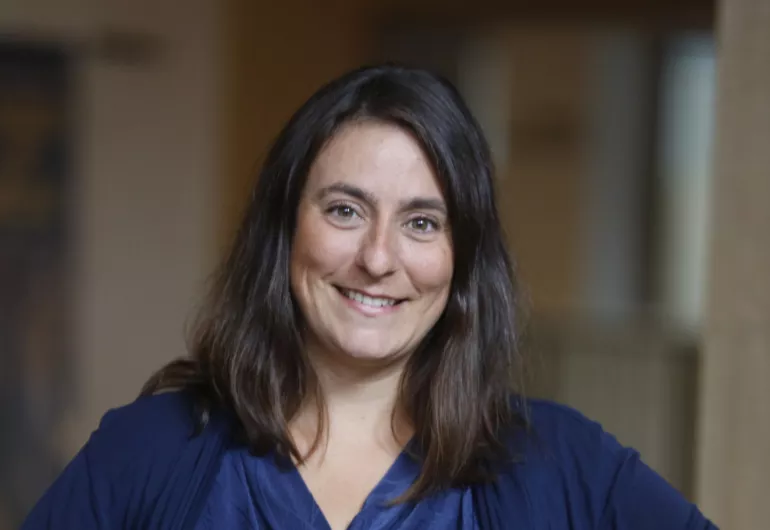
Welcome from the Executive Director
Welcome to another extraordinary season of dance and music at Northrop—a season we are proud to offer, inspired by your curiosity, energy, and commitment to making the arts a central part of life.
Rooted in the belief that the arts are essential to the human experience, Northrop is committed to cultivating intersections between performing arts and education—for all participants, now and for generations to come. This season, those intersections will be more vibrant than ever. We have curated performances that stretch boundaries, inspire reflection, and celebrate both innovation and tradition in equal measure.
You’ll see in this season’s lineup a range of world-class artists and ensembles—some of whom we know well, others who bring voices and perspectives new to our stage. Each program is selected not only for its artistic excellence, but also for its ability to provoke thought, open dialogue, and offer learning opportunities beyond the stage: workshops, pre-show discussions, community gatherings, and more. These elements are meant to deepen your experience, helping to illuminate context, process, and the living, breathing nature of creative work.
As part of the University’s teaching, research, and service mission, Northrop strives to be a catalyst—igniting transformation in each individual, inspiring positive change in our world. Through the rhythm of dance, the textures of music, and the shared moments among us in the audience, we hope you will find something that moves you, surprises you, and invites you to see the world just a little differently.
I invite you to join us not just as spectators, but as participants. Ask questions. Bring friends. Explore more. Share what you experience. We are honored to present this season, and even more honored to share it with a community that values what the arts offer—beauty, challenge, joy, connection.
Thank you for being here and supporting Northrop. Together, let us make Northrop’s 97th season remarkable.
With gratitude,
Kari Schloner
Executive Director
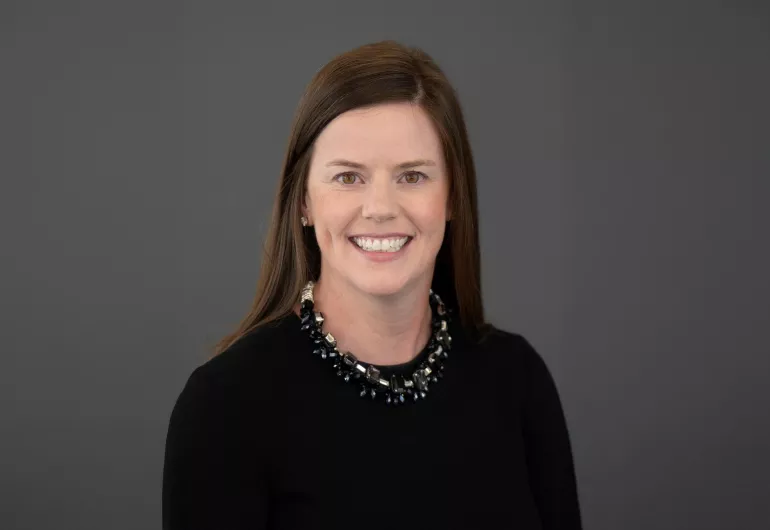
Welcome from the Advisory Board Chair
Dear Friends,
On behalf of the Northrop Advisory Board, it is my great pleasure to welcome you to Northrop, the University of Minnesota’s historic home for the performing arts. For almost a century, Northrop has been a place where artistry, learning, and community converge—a stage not only for extraordinary performances but also for dialogue, discovery, and inspiration.
Each season, Northrop presents world-class dance, music, and other performances, and serves as a gathering place for students, faculty, and community members alike. These experiences enrich our campus and our state, fostering the creativity, curiosity, and cultural understanding that are so vital in today’s world.
Your presence here affirms the importance of the arts in higher education and in civic life. We invite you to be more than an audience member—become an advocate for the arts. Share your experiences, bring new friends to Northrop, and help us amplify the voices of artists and thinkers who inspire us to see the world anew.
We also ask you to consider a gift to Northrop. Your financial support ensures that future generations can access the transformative power of the arts, that students can encounter artists in their classrooms as well as on our stage, and that our community can continue to gather here for moments that move and unite us.
Thank you for being part of Northrop’s story. Together, we can sustain this remarkable institution and secure its role as a cultural cornerstone for decades to come.
With gratitude,
Kelly McQueen, Chair, Northrop Advisory Board
The Companies
Trisha Brown Dance Company
Founding Artistic Director and Choreographer: Trisha Brown
Associate Artistic Director: Carolyn Lucas
Rehearsal Director: Cecily Campbell
Executive Director: Kirstin Kapustik
Programming Director: Jamie Scott
Company Manager: Mike Steele
Marketing Manager: Amanda Kmett’Pendry
Archivist: Benjamin Houtman
Production/Stage Manager: Louise Brownsberger
Lighting Supervisor: Joe Levasseur
Assistant Stage Manager: R. Christopher Maxwell
Public Relations: Jennifer Lerner
Accountant: Lisa Nuñez
International Representation: Julie Georges
Board of Trustees
President: Jeanne Linnes
Treasurer: Bill Wagner
Chair Emerita: Dorothy Lichtenstein
Barbara Bertozzi-Castelli, Ruth Cummings, Nakia Eliott Lawrence P. Hughes, Anne Livet, Tara Lorenzen, Stacy Spence
Trisha Brown Dance Company (TBDC) is a post-modern dance company dedicated to the performance and preservation of the work of Trisha Brown (1936–2017) and projects related to her legacy. Established in 1970, TBDC has toured throughout the world presenting work, teaching, and building relationships with audiences and artists alike.
Instagram: @trishabrowncompany
Facebook: @trishabrowndancecompany
The Robert Rauschenberg Foundation
The Robert Rauschenberg Foundation builds on the legacy of artist Robert Rauschenberg, emphasizing his belief that artists can drive social change. Rauschenberg sought to act in the “gap” between art and life, valuing chance and collaboration across disciplines. As such, the Foundation celebrates new and even untested ways of thinking.
Rauschenberg Foundation Website
Rauschenberg100
Robert Rauschenberg’s (1925–2008) strong conviction that engagement with art can nurture people’s sensibilities as individuals, community members, and citizens was key to his ethos. The centennial celebrations seek to allow audiences familiar with him and those encountering the artist for the first time to form fresh perspectives about his artwork.
A year of global activities and exhibitions in honor of Rauschenberg’s centennial reexamines the artist through a contemporary lens, highlighting his enduring influence on generations of artists and advocates for social progress. The centennial’s activation of the artist’s legacy promotes cross-disciplinary explorations and creates opportunities for critical dialogue.
The Walker Art Center
The Walker Art Center is a renowned multidisciplinary arts institution that presents, collects, and supports the creation of groundbreaking work across the visual and performing arts, moving image, and design. Guided by the belief that art has the power to bring joy and solace and the ability to unite people through dialogue and shared experiences, the Walker engages communities through a dynamic array of exhibitions, performances, events, and initiatives. Its multiacre campus includes 65,000 sq. ft. of exhibition space, the state-of-the-art McGuire Theater and Walker Cinema, and ample green space that connects with the adjoining Minneapolis Sculpture Garden. The Garden, a partnership with the Minneapolis Park & Recreation Board, is one of the first urban sculpture parks of its kind in the United States and home to the beloved Twin Cities landmark Spoonbridge and Cherry by Claes Oldenburg and Coosje van Bruggen. Recognized for its ambitious program and growing collection of more than 16,000 works, the Walker embraces emerging art forms and amplifies the work of artists from the Twin Cities and from across the country and the globe. Its broad spectrum of offerings makes it a lively and welcoming hub for artistic expression, creative innovation, and community connection.
The Creators

Trisha Brown
One of the most influential choreographers of her time, Trisha Brown (1936–2017) forever transformed the landscape of contemporary dance. A student of Anna Halprin, Brown participated in Robert Dunn’s choreographic workshops, leading to the formation of Judson Dance Theater and the explosion of interdisciplinary creativity that defined 1960s New York.
In 1970, Brown founded Trisha Brown Dance Company (TBDC), embarking on four decades of artistic exploration. She created over 100 choreographies, six operas, and a body of visual art recognized in museum exhibitions worldwide. Her earliest works were shaped by the urban environment of downtown SoHo, where she experimented with site-specific performances. By the 1970s, as Brown developed a singular abstract movement language, her work found a home in art galleries, museums, and international exhibitions. A pivotal shift came in 1979 when she moved from unconventional spaces to the proscenium stage, integrating her experimental vocabulary into traditional theatrical settings.
Brown’s contributions earned her nearly every major award for contemporary choreographers. She was the first woman to receive the MacArthur ‘Genius’ Grant (1991) and was honored with five National Endowment for the Arts fellowships, two Guggenheim Fellowships, and Brandeis University’s Creative Arts Medal in Dance (1982). France named her Chevalier dans l’Ordre des Arts et Lettres (1988), and she received the New York State Governor’s Arts Award (1999), the National Medal of Arts (2003), and the New York Dance and Performance Bessie Lifetime Achievement Award (2011). That same year, she was awarded the Dorothy and Lillian Gish Prize for her “outstanding contribution to the beauty of the world.”
Today, TBDC continues to honor her legacy through performances, education, licensing, and archival initiatives. The company reconstructs and remounts Brown’s major proscenium works from 1979–2011, alongside its In Plain Site initiative, which reinvigorates her choreography by adapting it to new spaces. In 2023, TBDC expanded its mission to include commissions from a new generation of artists, engaging contemporary voices whose work resonates with Brown’s legacy while reaffirming its primary role in preserving her groundbreaking contributions to dance.

Merce Cunningham Portrait. Photo and copyright by Annie Leibovitz, 1997. Courtesy of the Merce Cunningham Trust and the Jerome Robbins Dance Division, The New York Public Library.
Merce Cunningham
Merce Cunningham (1919–2009) was a celebrated dancer and choreographer renowned for his groundbreaking work, his lifelong passion for innovation, and his profound influence on generations of dancemakers and artists. Born in Centralia, WA, he attended the Cornish School in Seattle where he was introduced to the work of Martha Graham and met the composer John Cage, who would become his closest collaborator and life partner. In 1939, Cunningham began a six-year tenure as a soloist in the Graham company and soon began presenting his own choreography, most notably on joint music and dance concerts with Cage. In the summer of 1953, during a teaching residency at Black Mountain College, Cunningham formed a dance company to explore his innovative ideas. Over the course of his 70-year career, he choreographed 180 dances including such iconic works as Summerspace, RainForest, Sounddance, Travelogue, Pictures, Beach Birds, BIPED, and Ocean. He also presented nearly 800 events in museums, gymnasiums, outdoor stages, and theaters—beginning in 1964 with the Museum Event No. 1 at the Museum des 20. Jahrhunderts. Cunningham premiered his final work, Nearly Ninety, on his 90th birthday. The Merce Cunningham Dance Company remained in continuous operation until its closure in 2011, giving nearly 3,000 performances in over 40 countries.
In collaboration with Cage, Cunningham proposed a series of radical ideas including the separation of music and dance, the use of chance operations, and novel ways to utilize film and technology. He collaborated with such renowned artists and composers as Robert Rauschenberg, Jasper Johns, Andy Warhol, Frank Stella, David Tudor, Christian Wolff, and Takehisa Kosugi. Cunningham earned some of the highest honors bestowed in the arts including a MacArthur Fellowship (1985), a Kennedy Center Honor (1985), a Laurence Olivier Award (1985), the National Medal of Arts (1990), and Japan’s Praemium Imperiale (2005). In 2004, he was named Officier of the Legion d’Honneur. Today Cunningham’s work continues to be performed by professional and student dancers worldwide, and Cunningham Technique® is taught in countless studios and educational institutions.
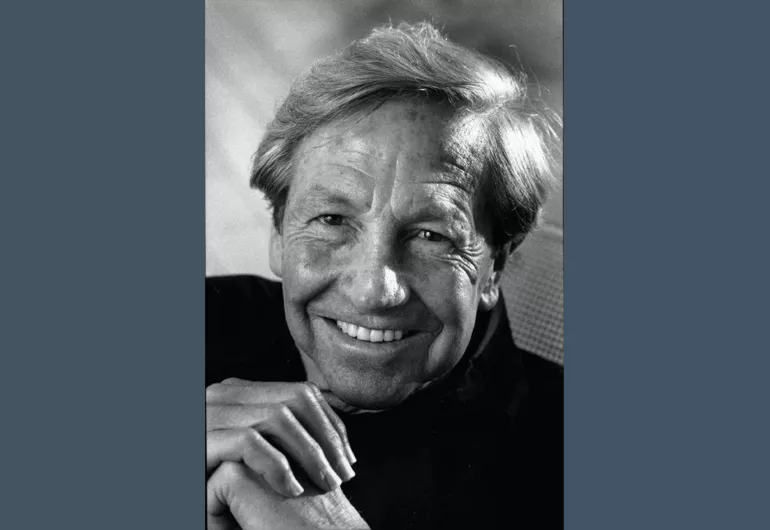
Robert Rauschenberg, 1997. Photo: Ed Chappell. Photograph Collection. Robert Rauschenberg Foundation Archives, New York.
Robert Rauschenberg
Born in Port Arthur, TX, Robert Rauschenberg (1925–2008) attended Black Mountain College in North Carolina and the Art Students League in New York, where he developed creative relationships and methods that proved to be formative. His nearly six-decade career was characterized by an irreverent and innovative approach to images, mediums, and disciplines and a love for artistic partnerships. Rauschenberg realized his first “Combine" in 1954, eschewing established artistic boundaries and hierarchies; he deployed the materials of everyday life while hybridizing aspects of painting and sculpture.
Collaborations with composer John Cage and dancer/choreographer Merce Cunningham spurred Rauschenberg to add performance to his wide-ranging palette, including costume and set designs for the Cunningham and Paul Taylor dance companies. Rauschenberg’s Combine Minutiae (1954) occupied the stage, serving as the set for its namesake Cunningham choreography, initiating over two dozen collaborations across some five decades, culminating in a set and costumes for Cunningham’s XOVER (2007).
Rauschenberg’s affiliation with the Judson Dance Theater motivated him to choreograph his first performance, Pelican (1963), and it led to a lifelong friendship with dancer/choreographer Trisha Brown, highlighted by numerous artistic collaborations. Brown performed in a number of Rauschenberg’s experimental works including Spring Training (1965), Map Room II (1965), and Linoleum (1966). An avid admirer of Brown’s choreography, Rauschenberg in turn designed costumes, sets, lighting, and, on occasion, music for her performances. These collaborations were mutually inspiring. Rauschenberg’s set design for Brown’s Glacial Decoy (1979) led him back to photography, which became a driving force for his own work over the next decade and a half. Using his own photographs to silkscreen the costumes for Brown’s Set and Reset (1983) reintroduced a vital technique that Rauschenberg would employ in numerous series over the next dozen years. During the Rauschenberg Overseas Culture Interchange (ROCI, 1984–91), he arranged for Brown to preview Astral Convertible (1989), precursor to Astral Converted (1991), for which he designed set and costumes, at the Cultural Palace in Moscow at the time of the opening of ROCI USSR. In 1990, he designed sets and costumes for Foray Forêt, which premiered at Biennale de la Danse in Lyon, France.
Laurie Anderson
Laurie Anderson is a writer, director, composer, visual artist, musician, and vocalist who has created groundbreaking works that span the worlds of art, theater, experimental music, and technology. Anderson has created numerous multimedia stage performances, as well as published ten books and been nominated for five Grammy awards. Her visual work has been exhibited globally, with her largest solo exhibitions to date recently displayed at the Hirshhorn Museum in Washington, D.C. and Moderna Museet in Stockholm, Sweden. In 2024, she received a Lifetime Achievement Award from the Recording Academy and will be releasing Amelia, a new record based on Amelia Earhart’s final flight around the world. Anderson is currently working on a new stage work, ARK: United States Part 5, set to open at Factory International this coming November in Manchester, England.
John Cage
John Cage (1912–1992) was a singularly inventive and highly influential American composer, writer, philosopher, and visual artist. Throughout his career, he departed from the pragmatism of precise musical notation and circumscribed ways of performance. His principal contribution to the history of music is his systematic establishment of the principle of indeterminacy by adapting Zen Buddhist practices to composition and performance. Cage’s aesthetic of chance produced a unique body of “once-only” works, any two performances of which can never be quite the same. To reduce the subjective element in composition, he developed methods of selecting the components of his pieces by chance early on through the tossing of coins or dice, and later through the use of computerized random number generators including IC (1984), created by Cage’s programmer-assistant Andrew Culver, to simulate the coin oracle of The I Ching.
Cage’s use of the computer resulted in a system of total serialism, in which all elements pertaining to pitch, noise, duration, relative loudness, tempo, and harmony could be determined by referring to previously drawn correlated charts. Thus, Cage’s mature works did not originate in psychology, motive, drama, or literature, but, rather, were just sounds, free of judgments about their musicality, free of fixed relations, and free of memory and taste. His most enduring composition, influenced by Rauschenberg’s White Paintings (1951), is the radically tacet 4’33” (1952), during which no sounds are intentionally produced.
Praised for his “adventurousness and muscular skill” (The New York Times), Grammy-nominated artist Adam Tendler has been called “the hottest pianist on the American contemporary classical scene” (Minneapolis Star Tribune), “relentlessly adventurous” (The Washington Post), a “remarkable and insightful musician” (LA Times), an “intrepid ... maverick pianist” (The New Yorker), and “one of contemporary classical music's most intentional and daring pianists” (Seven Days). At age 23, Tendler performed recitals in all 50 states on a DIY tour out of his car. He has since received Lincoln Center's Emerging Artist Award, the Yvar Mikhashoff Prize, and appeared as a soloist with the London Symphony Orchestra, LA Philharmonic, Sydney Symphony, Toronto Symphony Orchestra, NJ Symphony, Vermont Symphony Orchestra, as well as on the main stages of Carnegie Hall, the Barbican Centre, Sydney Opera House, BAM, Milan Fashion Week, and other leading series and stages worldwide. He has written two books and released several albums, including the latest, Inheritances, a New York Times Critic’s Pick, writing, “You will be moved, profoundly and intensely.” Tendler serves on the piano faculty of NYU, and is a Yamaha Artist.
Beverly Emmons has designed for Broadway, Off-Broadway, regional theater, dance, and opera, both in the U.S. and abroad. Her Broadway credits include Annie Get Your Gun, Jekyll & Hyde, The Heiress, Chronicle of a Death Foretold, Stephen Sondheim’s Passion, Abe Lincoln in Illinois, High Rollers, Stepping Out, The Elephant Man, A Day in Hollywood / A Night in the Ukraine, The Dresser, Piaf, and Doonesbury. Her lighting of Amadeus won a Tony Award. Off-Broadway, she lit The Vagina Monologues and has designed many productions with Joseph Chaikin and Meredith Monk. For Robert Wilson, she has designed lighting for productions spanning 13 years, most notably in America, Einstein on the Beach and The Civil Wars Pt V. Emmons’ designs for dance have included works for Trisha Brown, Martha Graham, and Merce Cunningham. She has been awarded seven Tony nominations, the 1976 Lumen Award, 1984 and 1986 "Bessies,” and a 1980 Obie for Distinguished Lighting, and several Maharam/American Theater Wing Design Awards.
The Company

Carolyn Lucas (Associate Artistic Director)


Savannah Gaillard (Dancer)
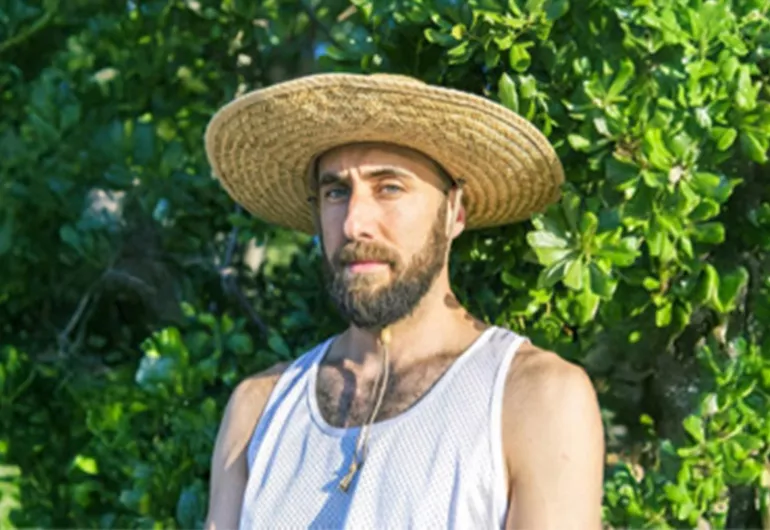
Burr Johnson (Dancer)

Rochelle Jamila (Dancer)

Claude CJ Johnson (Dancer)
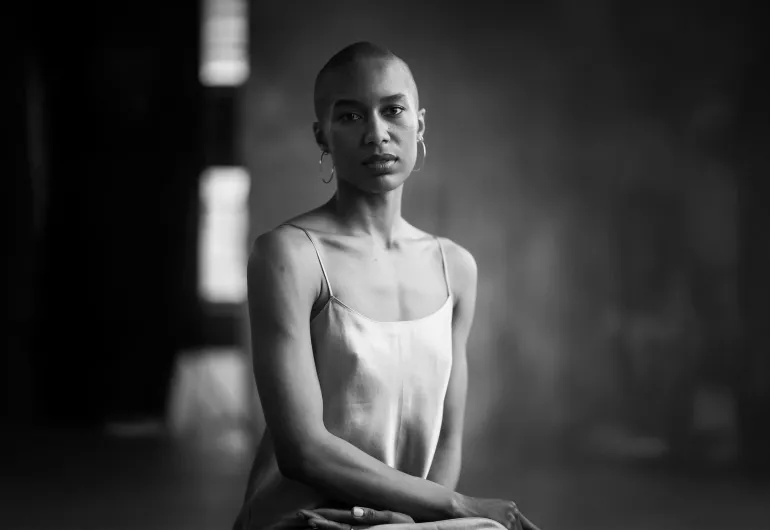
Catherine Kirk (Dancer)
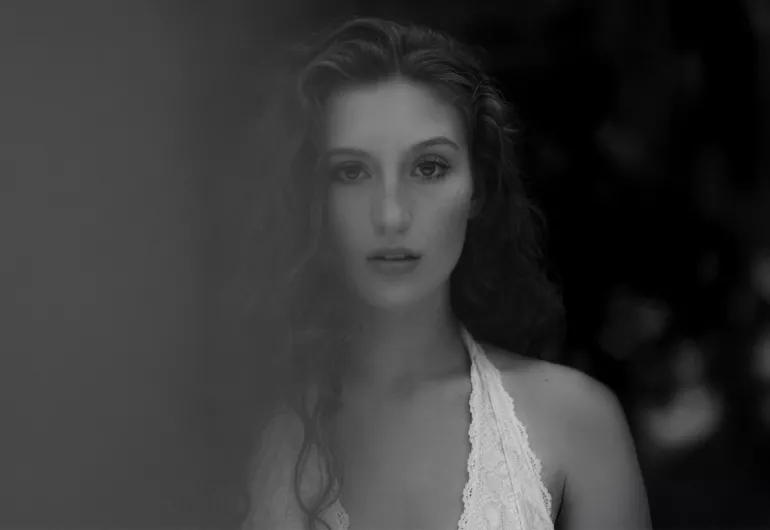
Ashley Merker (Dancer)

Patrick Needham (Dancer)

Jennifer Payán (Dancer)
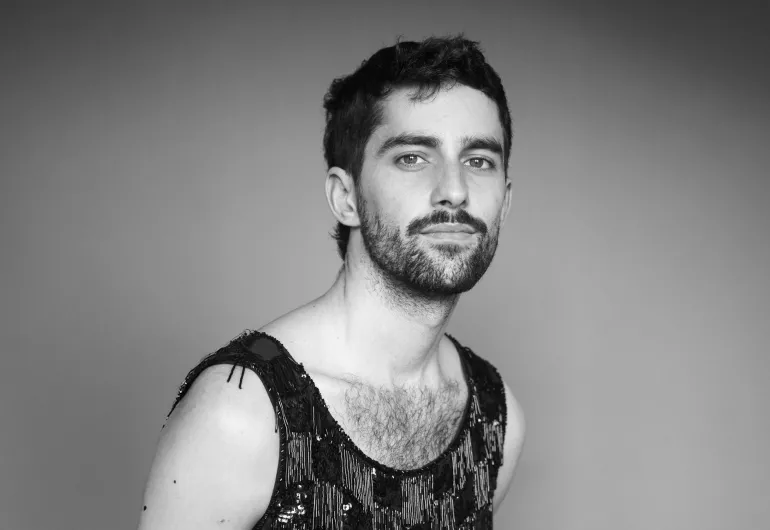
Spencer James Weidie (Dancer)

Aarush Bothra (Musician)
Aarush Bothra is a composer, percussionist, computer scientist, and maker based in Minnesota, and enjoys finding ways to blend his skills to create unique musical experiences for audiences. He is also interested in the ways we contextualize music as a society and how that drives audience perception of music, something that he often explores with his film music. Bothra’s music has been played by ensembles across the country, and he has studied under Sivan Cohen Elias at the University of Minnesota. You can find him at aarushbothra.com.
Koki Sato (Musician)
Koki Sato is a classical pianist and music curator dedicated to new music. He founded the University of Minnesota (UMN) New Music Ensemble, premiered works by Claire-Mélanie Sinnhuber, Leonardo Marino, and Atsuhiko Gondai, and performed across interdisciplinary projects ranging from ballet collaborations to science center programs. A first-prize winner of competitions in the U.S. and Japan, he has appeared as soloist with the New Japan Philharmonic, Sendai Philharmonic, and Schwob Philharmonic, and performed under Leon Fleischer. Festival appearances include Klangspuren Schwaz and Oh My Ears. Born in Tokyo, Sato is a doctoral candidate at the UMN.
Mike Steele (Company Manager/Musician)
Mike Steele is a writer, director, and performer based in Brooklyn, NY. Steele has been making live performances for over 15 years in Chicago, Austin, internationally, and now New York. He is the co-founder of CAROL performance group, with whom he recently premiered To Bridge Ten Millennia (Exponential Festival) and Disaster Theater (The Brick, Cannonball Festival). He has also collaborated and/or toured with Theatre for One, Links Hall, Cabinet of Curiosity, Trap Door Theater, and Teatr Witkacy, among others. Steele holds an MFA from UT Austin and is company manager for the Trisha Brown Dance Company.
Marc Crousillat has performed in works by Pam Tanowitz, Tere O’Connor, Netta Yerushalmy, John Jasperse, and others. He danced in Merce Cunningham Trust’s Night of 100 Solos at BAM and Beach Birds. He debuted on Broadway in West Side Story, directed by Ivo van Hove and choreographed by Anne Teresa de Keersmaeker. For his work with the Trisha Brown Dance Company (2014–2022), he received a Princess Grace Award and a “Bessie” nomination for Outstanding Performer in the revival of Watermotor. He made his acting debut in Burrow (2023) at Tribeca Film Festival and recently choreographed Clairo’s Terrapin music video, directed by Ayo Edebiri. He received his BFA from The University of the Arts.
Marcie Munnerlyn’s career as a company member of the Merce Cunningham Dance Company spanned eight years, concluding in 2011. She has led master classes and held teaching positions at Cornish College, Oregon Ballet Theatre School, Jefferson High School of the Performing Arts, Beaverton Arts and Communications, Pacific University, Ballet Hawaii, The University of Hawaii at Manoa, and The Colburn School. She was a stager for the Merce Cunningham centennial event Night of 100 Solos, and Travelogue at UNCSA. She has been awarded Merce Cunningham Fellowships in 2015, 2018, and 2023. She appeared in the 2019 film CUNNINGHAM. Munnerlyn is a comprehensively trained Pilates instructor and currently teaches Pilates full-time.
Andrea Weber danced with the Merce Cunningham Dance Company from 2004–2011, performing roles in over 25 works. Weber began teaching Cunningham technique and repertory in 2007. She has staged Duets for Wiener Staatsballett; Exchange, Scenario, and BIPED for the Lyon Opera Ballet; Pond Way for Ballett am Rhein and Ballet Vlaanderen; Suite for Five for the CNSMD in Lyon; RainForest for the Stephen Petronio Company; Travelogue and Sounddance at UNCSA; How To Pass, Kick, Fall and Run for Boston Conservatory and the American Dance Festival; and the Skidmore Event in the Tang Museum at Skidmore College. In 2017, she arranged and staged the Events for the Merce Cunningham: Common Time exhibit at both the Walker Art Center and the Museum of Contemporary Art Chicago. For Merce Cunningham’s centennial, Weber was the primary stager for Night of 100 Solos: A Centennial Event, presented at CAP UCLA’s Royce Hall in Los Angeles. This Event brought together 26 dancers from all over North America to dance solos that spanned six decades of Cunningham’s work. Since 2012, she has been awarded ten Merce Cunningham Trust Fellowships, reconstructing dances including Nearly Ninety, Ocean, CRWDSPCR, and Second Hand. Weber has a BFA in dance from the Juilliard School.
Louise Brownsberger (Production/Stage Manager)
Louise Brownsberger is a get-it-done production professional specializing in American modern dance and performance art. Previously the production and touring manager for the world-renowned Limón Dance Company, she is currently production manager of the Harkness Dance Center at the 92NY, where she collaborates with groundbreaking artists and companies. She is thrilled to have joined the Trisha Brown Dance Company team. Beyond managing dance shows, she collaborates as a lighting and projection designer with artists such as Dual Rivet, Hilla Ben Ari, Peter Stathas Dance, and Sasha Velour. Engaging with artistic teams to achieve a unified vision is both a skill and a passion. When she's not in the theater, she's usually out training for her next marathon.
Joe Levasseur (Lighting Supervisor)
Joe Levasseur is a graduate of North Carolina School of the Arts, and has been working in theatrical production in New York since 2002. As a lighting designer, he has collaborated with many artists, including Pavel Zuštiak/Palissimo, John Jasperse, Sarah Michelson, Jodi Melnick, Jennifer Monson, Neil Greenberg, and Beth Gill. He lit both Wendy Whelan's 2013 breakout Restless Creature and her subsequent collaboration with Brian Brooks, Some of a Thousand Words (2016). He has received two Bessie Awards (including one with Big Dance Theater) and a Knight of Illumination Award for his work on Meredith Monk’s Cellular Songs. Instagram: @sirjoelevasseur
joelevasseur.com
R. Christopher Maxwell (Assistant Stage Manager)
R. Christopher Maxwell hails from the bustling southern metropolis of Little Rock, AK and currently resides in Harlem, NY. Maxwell earned a BA in sociology and theater arts with a minor in dance from UALR, and received a master's of fine arts in stage management from Columbia University's School of the Arts. He is also an adjunct faculty at SUNY. He is now in his sixth year as a union Stage Manager at Actor's Equity Association. He also serves as director at large and New York metro regional representative for the Stage Manager’s Association.
Off-Broadway credits: (assistant stage manager [ASM]) Eco Village, (ASM) Safeword; (ASM) American Moor; Arden of Faversham (production stage manager [PSM]), Sweetwater: The Gospel of Iman (PSM); Regional Credits: (ASM) Mojada: A Medea in Los Angeles; (ASM) Mlima’s Tale; (ASM) Fairview; (PSM) The Inheritance; (PSM) Guys and Dolls; The Mountaintop / Silent Sky (PSM).
He gives honor to his parents and ancestors. His work is made available by the love of his friends and furry goblins.
Trisha Brown Dance Company Acknowledgments
Dancing with Bob: Rauschenberg, Brown & Cunningham Onstage is generously supported by Dance Reflections by Van Cleef & Arpels, Robert Rauschenberg Foundation, The Imperfect Family Foundation, The Wattis Family, The Dedalus Foundation, Bloomberg Philanthropies, The Gladys Krieble Delmas Foundation, the James E. Robison Foundation, The Jerome Robbins Foundation, and the Chicago Community Foundation. With additional support from Ken Tabachnick and Yael Mandelstam, and Thomas and Lily Beischer.
Special thanks to Ken Tabachnick for envisioning this program; Andrea Weber, Rashaun Mitchell, and Patricia Lent of the Merce Cunningham Trust for their partnership; Courtney J. Martin, Berenice Sarafzadeh, Francine Snyder, Kate Reibel, Miriam Master, and Anne Boissonnault; and the team at the Robert Rauschenberg Foundation for helping to bring this vision to life.
The Trisha Brown Dance Company (TBDC) is supported, in part, by public funds from the New York City Department of Cultural Affairs in partnership with the City Council and the New York State Council on the Arts with the support of the Office of the Governor and the New York State Legislature.
Other major support of the Trisha Brown Dance Company provided by the Imperfect Family Foundation, the Howard Gilman Foundation, The Shubert Foundation, the Fan Fox and Leslie R. Samuels Foundation, The Nathan Cummings Foundation, Jody and John Arnhold, the Hyde and Watson Foundation, the Harkness Foundation for Dance, and The Gladys Krieble Delmas Foundation. TBDC also extends special thanks to the Trisha Brown Company Board of Trustees and the Company’s Individual Donors at all levels.

Walker Acknowledgments
Program support provided by Knox Foundation: Susanne Lilly Hutcheson, Zenas Hutcheson IV, Henry Hutcheson, and Perrin Hutcheson; and the David and Leni Moore Family Foundation.
The Walker Art Center’s Performing Arts programs and commissions are made possible by donors and Producers’ Council members: AJT Fund; Bridge Fund for Dance program through the City of Minneapolis Arts & Cultural Affairs Department; Christina Evans and Weston Hoard; Nor Hall and Roger Hale; Judith Brin Ingber and Jerome Ingber; Neal Jahren; the Jerome Foundation; King’s Fountain/Barbara Watson Pillsbury; Knox Foundation: Susanne Lilly Hutcheson, Zenas Hutcheson IV, Henry Hutcheson, and Perrin Hutcheson; Sarah Lutman; Emily Maltz; the David and Leni Moore Family Foundation; National Endowment for the Arts; National Performance Network; Rebecca Rand; Lois and John Rogers; the Serendipitous Leverage Fund; Therese Sexe and David Hage; Elizabeth and Mike Sweeney; John L. Thomson; Villa Albertine and Albertine Foundation; Sue and Jim Westerman; and Frances and Frank* Wilkinson. Media partner MPR News, The Current, and YourClassical MPR.
*deceased
Northrop Acknowledgments
This activity is made possible by the voters of Minnesota through a Minnesota State Arts Board Operating Support grant, thanks to a legislative appropriation from the Arts and Cultural Heritage Fund.
The Northrop Advisory Board
- Cynthia Betz
- Kristen Brogdon
- Dr. Robert Bruininks
- Deb Cran
- Susan DeNuccio
- Benjamin Eng
- Karen Hanson
- Cari Hatcher
- Jill Hauwiller
- Holly Kellar
- Bob McMaster
- Kelly McQueen, Chair
- Jim Moore
- Robyne Robinson
- Toni Pierce-Sands
- Kari Schloner
- Chaz Sloane
- Kao Lee Vang
- Donald Williams
The Northrop Advisory Board is committed to the growth and awareness of Northrop’s mission, vision, and the continued future of presenting world-class dance and music in our community. If you would like more information about the advisory board and its work, please contact Cynthia Betz, Director of Development, at 612-626-7554 or betzx011@umn.edu.
The Northrop Organ Advisory Board
- J. Michael Barone
- Cynthia Betz
- Dean Billmeyer
- Kristen Brogdon
- Dr. Robert Bruininks
- Dee Ann Crossley
- Laura Edman
- Dave Fielding
- Nils Halker
- Cari Hatcher
- Pamela Neuenfeldt
- Philip Radtke
- Emily Roth
- Kari Schloner
- Tate Shannon
- Lindsey Siders
- Greg Zelek
With the restoration and reinstallation of Northrop’s Aeolian-Skinner Opus 892 organ, a group of dedicated volunteers now partner with Northrop for the awareness, success, and growth of organ programming and education. The Northrop Organ Committee features volunteers who are help with advocacy, network building, relationship development, and fundraising to help sustain and build Northrop’s Pipe Organ Music Series and other community events.
Northrop Campus & Community Council
- Linnea Fahnestock
- Jillian Nelson
- Emma Marlar
- Anise Mazone
- Carolina Maranon-Cobos
- Eve Schulte
- Laurel Keen
- Julia Heinen
The Northrop Campus & Community Council acts as a resource for Northrop’s future success and growth, ensuring that Northrop builds relationships with and engages the communities where we live, learn, and work. This group of committed volunteers helps Northrop connect with new audiences and advises on programming that reflects the diverse communities we serve.
Thank you for supporting Northrop!
Making Legendary Performances Possible!
At Northrop, we believe in connecting great artists and ideas with our community and to a new generation of audiences. Your gift helps make memorable arts experiences possible by supporting extraordinary performances and new arts commissions, and helping ensure accessibility to everyone through live-streamed programming, outreach to diverse communities and subsidized student tickets. Our Friends are at the center of Northrop’s biggest ideas and brightest moments on stage.
Become a Friend of Northrop today!
Ways to Give:
- Annual Giving, a yearly gift amount of your choice.
- Monthly Giving, choose a recurring gift amount that works for you.
- Stock Gifts, Northrop accepts charitable gifts of stock.
- Planned Giving, consider a legacy gift by including Northrop in your will or trust, or by designating Northrop as a beneficiary of a retirement plan or life insurance policy.
- Matching Gifts, double your gift through your company’s matching gift program.
To learn more about supporting Northrop please contact:
Cynthia Betz
betzx011@umn.edu or 612-626-7554
Thank you to the generous donors who continue to support programming for Northrop’s beloved Aeolian-Skinner Organ. It is because of you that this magnificent instrument’s voice will be enjoyed by many for years to come.
Friends of Northrop
A special thank you to our patrons whose generous support makes Northrop's transformative arts experiences possible. Make your mark on Northrop's future by becoming a Friend today, learn more by visiting Northrop's Give page.
We gratefully acknowledge the support from the Curtis L. Carlson Family Foundation, Minnesota State Arts Board, New England Foundation for the Arts, City of Minneapolis, hospitality partner the Graduate Hotel Minneapolis, and event sponsors PNC Bank and RBC Wealth Management.
Director's Circle
10,000+
- Anonymous
- Stuart Hanson
- Anna M Heilmaier Charitable Foundation
- Gail Kochie
- Robert Lunieski
- Jennifer Marrone & David Short Foundation
- Dr Thomas Von Sternberg and Eve Parker
5,000+
- Anonymous
- Drs. Robert Bruininks and Susan Hagstrum
- Ellie Crosby, The Longview and Crosswols Foundations
- Richard Gregory
- Ron Lotz and Randy Hartten
2,500+
- Jerry Artz
- Nancy and John Conlin
- Susan DeNuccio
- Nancy Gossell
- Kathy Gremillion
- Minhchau and Lawrence Harms
- Shawn Monaghan and Greg Plotnikoff
- Thomas and Conchy Morgan, In Memory of Sylvia and Henry Frisch
- Sandra Morris
- Gary A. Reetz
- Timothy Sullivan
- Donald Williams and Pamela Neuenfeldt
Friend's Circle
1,000+
- Jeanne Andre
- Frederick and Cynthia Betz
- Jeff Bieganek
- Deb Cran and Robert Craven
- Fran Davis
- Judith and Bruce Hadler
- Denise and Cory Holtz
- Karen Hanson and Dennis Senchuk
- Sally and Richard Leider
- Jennifer Leopold and Steve Katz
- Dana and Lori Klimp
- Timothy and Anne McClarnan
- Bob and Susanna McMaster
- Kelly McQueen
- Bruce Mebust and Kirsten Scribner-Mebust
- Katheryn Menaged
- Emily and Jim Moore
- Mark and Cecilia Morrow
- Gwen Myers
- Tim and Gayle Ober
- Lance Olson
- John Reay and Karen Hanson
- Marianne Remedios and John Wald
- Scarborough Fair Boutique
- Kathryn Sedo and Scott Beers
- Allegro Fund of the Saint Paul & Minnesota Foundation
500+
- Margaret Albrecht
- Kurt Bjorklund
- R. and J. Cameron
- Rob Carlson and Gregg Larson
- Will Craig
- Stephen Davis and L. Murray Thomas
- Jo DeBruycker
- George Ehrenberg
- Patricia Gaarder
- Lara Kluge
- Stephanie Laitala
- Voigt Lenmark and Family, In Loving Memory of Mary Jean Lenmark
- Glenn Lindsey
- Sheryl and Jeffrey Louie
- Valerie Meyer and Mitchell DeJong
- David Musolf
- Holly MacDonald and John Orbison
- Candice and Gerald Matykowski
- Valerie Meyer
- David and Leni Moore
- Curt Nelson
- Susan Porter
- Richard Taylor
- John Van Bogart
250+
- Anonymous
- Elissa Adams and Michael Margulies
- Paul Aslanian
- Niki Bohne
- Kristen Brogdon and David Ulaszek
- Peter and Wenda Carlyle
- Stephen and Mary Chicoine
- Kate Christianson
- Lisa and Dan Gray
- Cari and Matthew Hatcher
- Holly Kellar
- Kari Larson
- James and Sharon Lewis
- Holly Radis-McCluskey and Glen McCluskey
- Elizabeth Parker
- Amy Olson
- Derrill Pankow
- Gordon Rouse and Sylvia Beach
- Leah and James Sheehy
- Darlene Sholtis and Heino Beckmann
- Susan Steffen
- Karen Owen Tuzcu and Ertugrul Tuzcu
100+
- Anonymous
- Lisa and Todd Anderson
- Tonja Bivins
- Sherry Blohm
- Kimberly Broderick and Richard Hruby
- John Bullough
- David Burton
- Michelle Connor and Greg Froehle
- Sandra Daly
- William Durfee and Devorah Goldstein
- Kristin Elizondo
- Ben Eng
- Cynthia and Thomas Gerst
- Mark Gilbert
- Annalee Gray
- Richard Gwynne
- Annette Hansen
- Michael Heath
- Colleen Herrmann
- Stefanie Hofman
- Kimberly Hutchens
- Christi Hutchinson
- Ann Jaede
- Barry and Karen Johnson
- Michael and Judy Jones
- Randy Kish
- Geoff Krug
- Joseph Kuznik
- Roberta Lamps
- Peter Lund
- Holly Manning
- Cynthia Marsh and CW Vandersluis
- Elizabeth and Carleton McCambridge
- Kimberley MacLennan
100+ (continued)
- George and Orla McClure
- Anne and Michael McInerney
- Mary Ann McKenna
- Toni McNaron
- L D Mech
- Stephen Nelson and Joan Bren
- William and Jennifer Neujahr
- Denis O’Pray
- Barbara Owens
- Marcia Palma
- David and Mary Parker
- Connie Plaehn
- Danielle Robinson-Prater and Joel Prater
- Patricia and Joseph Pulice
- Mary Roberts and Edward Kraft
- Tracey Rutherford
- Kari Schloner
- Renate Sharp and Donald Notvik
- John Shreves
- Andrea Sjogren
- Lisa Thomas
- Cindy Tong and R. Ford Denison
- Renee Warmuth
- Paula Webster
- Michael Weinbeck
- Brian and Katherine Weitz
- Jonathon White
- Michael and Barbara Wigley
- Cheryl Winston
- Christine Winterkamp
- Mark Wright and Elizabeth Walton
- Roger Worm
- 2 Degrees North, LLC
Up to $99
- Anonymous
- Aruna Ahluwalia
- Melissa Albachten
- Olive Albanese
- Toyin Alowonle
- Barbara Allan
- Monica Allen
- Magdalena Alonso
- Tyler Amick
- Dakota Andersen
- Janet Anderson
- Julie and Erling Anderson
- Linda Andrews
- Alexis Andrus
- Heather Anfang
- Verna Arcedo
- Andres Arevalo
- Mary Athorp
- Michael and Jessica Austin
- Karen Bachman
- Danica Balsiger
- Courtney Barancin
- Burton Barnard
- Daniel Baumgartner
- Lynette Beck
- Allen Beers
- Bryan Behun
- John and Lani Bennett
- Steven Bergerson
- Maximiliano Bezada
- Juliane Bingener
- Jon Bjorlie
- Mark Bohnhorst and Mary Wahlstrand
- Lucas Botz
- Lauren Brand
- David Braslau
- Heather Bray
- Willie Bridges
- Lawson Brown
- Nancy Brown
- Odell Brown
- Richard Brown and Dori Henderson
- Jeanne Brownell
- Mary Buss
- Kimberly and Michael Byrd
- Daryl Carlson
- Cristina Castro
- JaNan Cavanaugh
- Kyle Cedermark
- Cynthia Cespedes-Livieri
- Oscar Chamberlain
- Karen Charles
- Carol Chomsky
- Louis and Alissa Clark
- David and Nancy Claussen
- Zach Clifton
- Lori Collier
- Janet Conn
- Conni Conner
- James Cook
- Ryna Coopergard
- Patrick Cornette
- Troy Couillard
- Stephen Coyle
- Catherine Cragg
- Kristin Cutler
- Sandra Dahlstrom
- Alisa Dalton
- Suzanne Darnell
- Beth Davies
- Gretchen Davis
- Jo DeBruycker
- Jorge Delgado
- Jaquelyn Dimmen
- Karen Dorn
- Shannon Doty
- Ann Draeger
- Scott Drawe
- Abby Duke
- Alix Dvorak
- Stephanie and Tom Easthouse
- Kathleen and Christopher Eilers
- Amanda Eldridge
- Susan Engel
- Karn Engelsgjerd
- Mary and Mark English
- Jeanne Enstrom
- Constance Evingson
- Sheryl Fairbanks
- Fergus Falls School of Dance
- Christine Faust
- Raymond Finzel
- Elizabeth Flavell
- Samantha Ford
- Katharine Fournier
- Charlotte Frank
- Judith Franklin
- Lauren Fryer
- Geoffrey Fulton
- Paul Gerberding
- Leslie Gerstman
- Laura Gilbert
- Shanna Glatz
- Allison Goulson
- Peter Gove
- John Graham
- Jesse Grantz
- Lily Gray
- Brian Green
- Laura Greteman
- Peteris Grotans and Eva Tone
- Jodi Gusso
- Harriet Guthertz and Laura Mathews
- Philip Hage and Kathleen Franzen
- Diane and Jon Hallberg
- Indra Halversone
- Jamie Hansen
- Peter Hanson
- Stephen Hanten
- Paul and Charlotte Hardt
- L.T. Harris
- Catherine Hart and Andres Gonzalez Leon
- Joyce and Eugene Haselmann
- Nancy and Richard Haskin
- Elizabeth Hazen
- Heather Heefner
- Elizabeth Heffernan
- Paul Hellickson
- Carrie Hendrickson
- Craig Hennen
- Zoe Henrot
- Annemarie Herrlich
- Christina Herzog
- Robin Hickman-Winfield
- Janet Hirsch
Up to $99 (continued)
- Kirby Hobers
- Jeanne Holly
- Therese Hovard
- Irondale High School Marching Band
- Gianna Isaacson
- Ramona Jacobs and Charles Christianson
- Leah Janus
- Robert Johns and Linda Hennum
- Benjamin Johnson
- Craig and Jeanne Johnson
- Kathy Kampa
- Matthew and Brittany Keefe
- Mary and Karl Keel
- Mary Kenning and Thomas Furey
- Karen Keller
- Sharon Kessler
- Julie Kiffmeyer
- Kimberly King
- Susan and Douglas Kmetz
- Brenda K Knapp-Polzin
- Robin Knight
- Cindy and Jon Koebele
- Jason and Amy Kraus
- Sonja Kroell
- Deborah Kucera
- Ann Kuitunen
- Dorian Kvale
- Eve Laabs
- Shirlynn Lachapelle
- Janine Laird
- Jeffrey Land
- Laura Landy
- Audrey Lane-Getaz
- Deborah Lang
- Mark Lang
- Carol Lange
- Molly Larsen
- William D Larson
- William Larson and Richard Space
- Amy Laude
- Pamela Layton and Paul Giguere
- Brenda Leach
- Kathryn LeFevere
- Stephen Levin
- Barbara Lind and Craig Poeschl
- Elizabeth Lindeke
- Jorge Lievano Carvajal
- Rebecca Lindholm
- Omar Lopez-Vazquez
- Brittney Lovdahl
- Xiang Luo
- Shannon Mackey Bojack
- Carrie Madison
- Eloise Maki
- Gertrude Malamsha
- Avis Mandel
- Kristen Mandt
- Jennifer Martin
- Diane Martucci
- Anise Mazone
- Livia Mazur
- Beth McClure
- Debra McKenzie
- Curt McLelland
- Dan McMahill
- Margaret McVay
- Solveig Mebust
- Samantha Meland
- Daniel Mensah
- Arike Mercer
- Alli Mertins
- Janice Meyer and Roger Jorgenson
- Mary and Timothy Miley
- Phil and Michele Miller
- Jessica Miller
- Katherine Miller
- David Milne
- Christine Moore
- Karen and Bill Musolf
- Janet and Richard Myers
- Nylce Prada Myers
- Lori and Thor Nelson
- Theresa Nelson
- Zachary Nelson
- Maren Neuberger
- Kelly Nezworski
- Pamela Ngunjiri
- Linda Nitchals
- David Noerper
- Michelle Norton
- Nina Norum and Ronald Hays
- Kim Okamura
- Sandra Olson
- Annette Olson
- Field and Cynthia Olson
- Sandra Olson
- Pat and John Owens
- Heidi Oxford
- David Palm
- Michael Palmquist
- Gary Pang
- Anne Parks
- Ann Pasch
- Maureen and Gerald Pearo
- Patricia Pearson
- Beth Peck
- Lisa and Gary Pederson
- David Perlman
- Michelle Petersen
- Christina Peterson
- James Peterson
- Tamara Pickens
- Leah Piersol
- James Pikala
- Marcy and Jerry Podkopacz
- Claudia Poser and Ronald Ofstead
- Colleen Powers
- Bently Preece
- Anne and Mark Preston
- Lee Prevost
- Shawn Prosser
- Jan Prust
- Subra Ramadurai
- Tiffany Ravelomanantsoa
- Virginia Read
- Jeffrey Reed
- Jeffrey Reichel
- Debra Reischl
- Jon Reischl
- Jon Reynolds
- Muriel Ricketts
- Robyne Robinson
- Sam Rockwell
- Lisa Roe
- Elizabeth Rogers
Up to $99 (continued)
- Judith Rohde
- Deb Rohloff
- Leah Rosch
- David Rosenbloom and Annie Handford
- Linda Roszak
- Tess Roth
- Jennifer Rubin
- Tony Rubin
- Jacquelyn Ruen
- Nancy Ruhland
- Catherine Ryan and Michael Muchow
- Lorraine Saito
- Marcia Sandberg
- Annette and Victor Sandler
- Uri Sands and Toni Pierce-Sands
- Keshav Sapatnekar
- Edward Sarnoski Jr
- Steven Schellhaass
- Tom Schmidt
- Gary Schrantz
- Jeffrey Schuh
- Bradley Schultz
- Thomas Schumacher and Susan Naughton
- Molly Schwendeman
- Jessica Schwie
- Anthony Scott
- John Seaborn
- Angela Sechler
- Charles Self
- Barbara Shaterian
- Michele and Chris Shepherd
- Rebecca and John Shockley
- Jay Siemieniak
- Tricia Silpala
- Carol Skinner
- Barbara Sletten
- Holly Slocum and Paul Gunther
- Alan and Kay Smith
- Alissa Smith
- Caroline Smith
- Mary Solomon
- Bonnie and Craig Sommerville
- Karen Spurth
- Martin Stachnik
- Kamala Stack
- Susan and Thorlief Stangebye
- Catherine Staats
- Katherine Stalker
- Elizabeth A Stejskal
- Sarah Stein and Robert Work
- Bridget Stevens-Murphy
- Robert Stewart
- Stephanie Stuart
- Erika Sullivan
- Matthew Suszkiewicz
- Susan and Kent Swanson
- Jeremy Swenson
- Marypat Takacs
- Jonathan Tallman
- Trisha Taylor
- Tom Tessman and Dianne Blake
- The SEAD Project
- Christina and Kweli Thompson
- Rodney and Carol Thompson
- Eliza Tocher
- Michelle Tolliver
- Stephen Tornio and Virginia Bell
- Arthur Troedson
- Emily Tubman
- Elaine Tucker
- Nancy Tykwinski
- Nicole Tyler
- Lyn Uhl
- Michael Unger
- Elizabeth Unze
- Tatiana Valdberg
- Sherry Van Fossan
- Ann Van de Winckel
- Kao Lee Vang
- Alfonso Velasco
- Charles Vilina
- Kristina Vozni
- Sean Walker
- Ann Waltner and Robert Anholt
- Steven Wastler
- Beth Waterhouse
- Paul Werger
- Zachary Wigley
- Stephen Willging and Katherine Wells
- Katrina Williams
- Randy Williamson
- Christina Witzel
- Liza Womeldorf
- Julie Young Walser
- Sri and Aks Zaheer
- Louise Ziegler
- Jeanne Zimmer and Pete Steinke
- Margaret Zoerhof
- Kristen and Thea Zschomler
- Arthur Troedson
- Emily Tubman
- Elaine Tucker
- Nancy Tykwinski
- Nicole Tyler
- Lyn Uhl
- Michael Unger
- Elizabeth Unze
- Tatiana Valdberg
- Sherry Van Fossan
- Ann Van de Winckel
- Kao Lee Vang
- Alfonso Velasco
- Charles Vilina
- Kristina Vozni
- Sean Walker
- Ann Waltner and Robert Anholt
- Steven Wastler
- Beth Waterhouse
- Paul Werger
- Zachary Wigley
- Stephen Willging and Katherine Wells
- Katrina Williams
- Randy Williamson
- Christina Witzel
- Liza Womeldorf
- Julie Young Walser
- Sri and Aks Zaheer
- Louise Ziegler
- Jeanne Zimmer and Pete Steinke
- Margaret Zoerhof
- Kristen and Thea Zschomler
The Heritage Society Members
The Heritage Society honors and celebrates donors who have made estate and other planned gifts for Northrop at the University of Minnesota.
- Nancy Allen*
- Jerry Artz
- John Follows*
- Stephen Gordon and Pat Gavan-Gordon
- Gail and Stuart Hanson
- Charlie Johnson
- Peter Lund
- Darlene M. Sholtis
*Deceased
Northrop's Aeolian-Skinner Organ
Organ Supporters
- Barbara Allan
- Monica Allen
- Ann and Ted Allison
- Timothy and Suzanne Almen
- Elizabeth Anderson
- Janet and Dean Anderson
- Terry and Vicki Anderson
- Briana Baldwin
- Karen Barale
- J. Michael Barone
- Christopher Barth
- Matthew and Anna Beckler
- Carol Bessler
- Dean Billmeyer
- Cynthia Bleskachek
- Lauren Boerboom
- Dian and Timothy Boonstra
- Dayne Bose
- Toni Brekke
- Joyce Brown
- Drs. Robert Bruininks and Susan Hagstrum
- Mark Carter
- Carol and Loren Carver
- Peter Colburn
- Scott Cragle
- Dee Ann and Kent Crossley
- T. John Cunningham
- Tim Dockter
- Anne and Timothy Droske
- Mollie Dunlap
- Laura and Tim Edman
- Edward Eiffler
- Chris Fernlund
- Douglas Feyma
- Karl Fischer
- Alexander Ford
- Nancy Fox
- Salvatore Franco
- Reid Froiland
- Renee Gallup
- Amanda Greb Jones
- Peter Hanson
- Jeremy Haug
- Todd Helmer
- Ruth Hoff
- Karen Hopps
- Kenneth and Julie Hoyme
- Ruth Ann and Charles Hyser
- Maria Jette
- Charlie Johnson
- Michael Jones
- John Kearns
- Jenny Kisner
- Carla Koepke
- Joseph Kuznik
- Carol and Terry Leach
- Randy Lee
- Tobias Leppert
- Ronald and Diane Low
- Glen Lubiens
- Peter Lund
- Rosemary Lundell
- Steven Mathe
- Nathaniel McNeil
- Yelena Mdivani
- Sherri Meyers
- Janell and John Miersch
- Arthur Miller
- Jenna Miller
- Josh Miller
- Susan Murray
- Jennifer Nehls
- Alan and Kay Noland Smith
- Pamela Neuenfeldt and Don Williams
- Kelly Nezworski
- Danita Ng
- Eric Nielsen
- Steven and Mary Oakley
- Jennifer Oknich
- Dennis and Betty Jo Olsen
- Nate Otto
- Steve Panizza
- Jon Poling
- Melissa Powers
- Holly Radis-McCluskey and Glen McCluskey
- Chris Rhea
- Martin and Susan Richards
- Filip Rosseel
- Thomas Ryan
- Andrew Thompson
- Sarah Schaffer
- Laura and Ron Schlatter
- Barbara Shaterian
- Erica Skeate
- Preston Schlueter
- William Slobotski
- Cynthia Smith
- Kumi Smith
- Martin Stachnik
- Kathleen and Joseph Stanford
- Amy Stech
- Alice Storm
- Lisa Swanson Faleide
- Chelsea Thein
- Richard Thorne
- Olivia Tobin
- Hoa Trinh
- Jane Weiers
- John Wells
- Carolyn Whitson
- Jeff Wyant
- Enrica Zaidman
This season’s listing is current as of 10/23/25
Please contact Matthew Keefe at keefe175@umn.edu if you have any corrections or questions.
This Cultural Districts Arts Fund activation is funded, in part, by the City of Minneapolis Arts & Cultural Affairs Department.
This activity is made possible by the voters of Minnesota through a Minnesota State Arts Board Operating Support grant, thanks to a legislative appropriation from the Arts and Cultural Heritage Fund.


